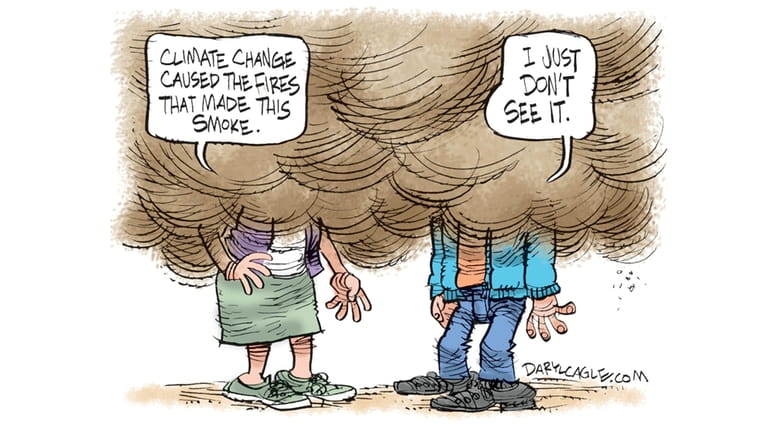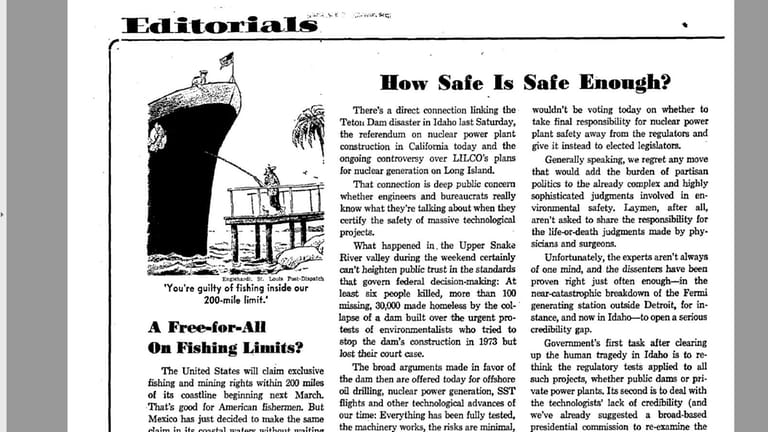Grave anti-police charges for back-the-blue GOP donor
Daily Point
Alleged cop attacker is Suffolk GOP backer
Like countless local businessmen, Long Island undertaker Peter Moloney has long appeared on official lists of contributors to regional and national politicians. In this case, both the donor and some of his recipients stand out as especially newsworthy.
Moloney, 58, of Bayport, was charged this week with assaulting law-enforcement officers and other crimes during the Jan. 6, 2021 U.S. Capitol insurrection aimed at keeping President-elect Joe Biden from succeeding Donald Trump. Described as co-owner of Moloney Family Funeral Homes, the defendant allegedly sprayed insecticide at the faces and bodies of police officers, according to court papers filed in Washington.
Online filings viewed by The Point indicate that Peter Moloney, listed as entrepreneur and funeral businessman, contributed a total of $30,000 in 2021 and 2022 to former Rep. Lee Zeldin, the Suffolk County congressman who ran for governor on the Republican line last year as a law-and-order candidate and defender of police in New York. The contributions came in three $10,000 amounts — the first on June 4, 2021; the second on Jan. 13, 2022, and the third on Oct. 21, 2022.
Those are by far the largest of Moloney’s donations, overwhelmingly to Republicans, during Trump’s term of office. Others included $1,000 to Rep. Nick LaLota last year when he was seeking his first term. In 2020, Moloney gave $1,000 to Trump in October, shortly before his defeat, $500 to Sen. Lindsey Graham, and $250 to State Sen. Alexis Weik. Other donations, to Suffolk candidates, go back as far as 20 years, and include $7,300 to the Republican National Committee in July 2016 when Trump was first nominated.
U.S. Magistrate Judge Steven I. Locke on Wednesday ordered Moloney to be released on $100,000 bond and the businessman, who has been involved with several civic organizations including the Port Jefferson Chamber of Commerce, is due to appear virtually before a District of Columbia judge on June 20.
“Moloney did not simply march to the Capitol with other protesters. He brought protective eyewear, a helmet, and a can of Black Flag Wasp, Hornet & Yellow Jacket Killer,” an FBI agent wrote in an affidavit, as reported by Newsday. “This indicates that he went to the Capitol on Jan. 6, 2021, prepared for violence."
Never breaking from Trump, Zeldin had PBA endorsements, attacked New York State bail reforms, vowed the hiring of more cops and correction officers, and had many “back the blue” flags in his camp. But in a polarized political world, partisan alliances can depend on who is enforcing or defying which laws and when.
— Dan Janison [email protected]
Pencil Point
In the dark

Credit: CagleCartoons.com/Daryl Cagle
For more cartoons, visit www.newsday.com/nationalcartoons[1]
Reference Point
Safety concerns that held water

The Newsday editorial from June 8, 1976.
A dam collapsed in Idaho. The reverberations were felt on Long Island.
The year was 1976, and the June 5 rupture of the Teton Dam on the Teton River killed 11 people and 16,000 livestock, destroyed thousands of homes and businesses, and caused as much as $2 billion in damage. Environmental and conservation groups had sued to stop the dam’s construction for safety reasons; data showed the canyon rock at the site was unstable. But the lawsuit was dismissed in 1973 and the dam was completed in November 1975, seven months before its catastrophic collapse.
Newsday’s editorial board took notice because Long Island was grappling with its own potential threat to public safety: the Long Island Lighting Company’s controversial plans to operate a nuclear power plant in Shoreham. In a June 8, 1976 editorial called “How Safe Is Safe Enough?”, the board noted that what happened in Idaho exacerbated “deep public concern whether engineers and bureaucrats really know what they’re talking about when they certify the safety of massive technological projects.”
The board noted similar concerns at play in California, where voters the same day that the editorial was published would nevertheless defeat by more than a 2-1 margin a referendum that would have prohibited the construction of nuclear power plants.
Newsday’s board cited the reasons typically given for supporting such projects — that everything has been tested and works, risks are minimal, fail-safe provisions are in place, and the facility is needed for economic reasons.
“It may very well be so — for instance, we think both economic and safety data justify LILCO’s nuclear plant at Shoreham and perhaps ultimately another at Jamesport,” the board wrote. “But if people felt really confident about the expert decisions coming from government, industry and laboratories on such questions, there’d be no uproar over LILCO’s plans …”
And indeed, there was uproar, with the first anti-Shoreham demonstration taking place that month — a movement that would culminate three years later, almost to the day, when 15,000 people protested at the Shoreham site on June 3, 1979, following the notorious accident at the Three Mile Island nuclear power plant in Pennsylvania.
In that 1976 editorial, the board explained what it saw as a dilemma for governments that must ensure public safety but also consider public worries and dismiss those it deems baseless.
“Obviously human lives shouldn’t be subjected to needless risks,” the board wrote. “But neither should the nation’s standard of living be held down because of groundless fears.”
In the end, it wasn’t the risks themselves that grounded Shoreham but the impossibility of safely evacuating Long Island residents in the case of an accident at the plant. The Suffolk County Legislature approved a resolution to that effect in 1983 and — after Hurricane Gloria dented confidence in LILCO in 1985 and the Chernobyl disaster piqued nuclear meltdown fears in 1986 — then-Gov. Mario Cuomo announced a plan to decommission the plant, a process that was completed in 1994.
Nearly a half-century after that editorial, Long Island ratepayers are still coughing up money to cover the cost of Shoreham and the public is still wary of expert assurances that fly in the face of dangers they can see.
Nuclear power plant closures, like nuclear disasters, have fallout.
— Michael Dobie [email protected] and Amanda Fiscina-Wells [email protected]
References
- ^ www.newsday.com/nationalcartoons (www.newsday.com)